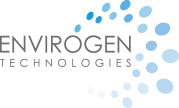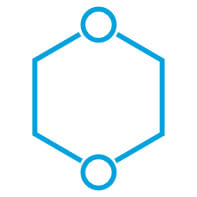The Issue with 1,4 Dioxane
1,4 Dioxane (1,4-D) is a persistent contaminant in groundwater commonly encountered at contaminated sites with nearby supply wells. Historically, 1,4-D has been used as a stabilizer in greases, waxes, paint strippers, antifreeze, and chlorinated solvents, and is also used in the manufacturing of pharmaceuticals, plastics, and other products. The US Environmental Protection Agency (EPA) classifies 1,4-D as a “likely human carcinogen”. Unfortunately, it can be very challenging to remove from water and costly to remove by traditional treatment processes.
Current Regulatory Environment
Currently, there are no federal EPA drinking water standards for 1,4-D. However, a number of states have taken action to regulate this contaminant. New Jersey (NJDEP) adopted a Groundwater Quality Standard of 0.4 µg/L for 1,4-dioxane and the state’s Drinking Water Quality Institute has proposed a drinking water standard of 0.33 µg/L.
New York, adopted the first enforceable limit for 1,4-dioxane in drinking water in the US, setting it at 1 µg/L. New York requires all public water systems, regardless of size, to test and monitor for the compound.
California, too, has begun steps toward restricting 1,4-dioxane in consumer goods and setting an enforceable limit in drinking water. California currently has a 1 µg/L notification level and 35 µg/L response level, at which point the source is recommended to be removed from service.
The Envirogen Solution
Envirogen offers a highly effective solution for water contaminated by 1,4-D. Specifically, an aerobic cometabolic biological treatment (CBT) system based on Envirogen’s proven and proprietary Fluidized Bed Reactor (FBR) technology has been demonstrated to reduce 1,4-D concentrations to non-detect levels. The CBT system utilizes propane to feed and grow a specially selected microbial biomass on the FBR media. These microbes consume propane and subsequently produce enzymes that are capable of cometabolically degrading the target compound of 1,4-D.
While Advanced Oxidation Processes (AOPs) such as low-pressure UV light, hydrogen peroxide, or ozone have been used to oxidatively destruct the harmful contaminants, these technologies tend to be energy intensive, costly, and/or have inherent safety risks. Other technologies, such as liquid phase granular activated carbon come with the high cost of ongoing media replacement and can be subject to breakthrough/noncompliance if not monitored regularly.
Envirogen has successfully applied the FBR to treat 1,4 Dioxane at an Air Force Base in TN. Read our press release

 1,4 Dioxane
1,4 Dioxane